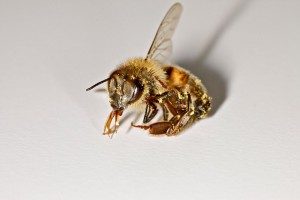Native habitat can protect native bees from the harmful effects of pesticides
Numerous studies have documented the role of habitat loss due to agricultural intensification in driving wild bee population declines. However, little is known regarding the effects of on-farm pesticide use on wild bee populations. Now, a study published in Proceedings of the Royal Society Biology has found that pesticide use is directly correlated with declines in native bee populations, but that the presence of native habitat in close proximity to farms may safeguard wild bees from the negative effects of pesticide use. Additionally, the use of agrochemicals typically considered safe for bees—such as fungicides—contributed to the harmful effects. Researchers surveyed wild bee communities in apple orchards with varying amounts of surrounding natural area. They found that as pesticide usage increased, the number and abundance of wild bees decreased. Thus, even agrochemicals considered very low risk to bees had a negative impact when exposure levels were high. Conversely, the authors also found a correlation between the amount of native habitat surrounding farms and the number of wild bee species and their prevalence. As the amount of natural habitat increased, the abundance and richness of native bees also increased, suggesting that an increase in natural area provides wild bees with alternative food and nesting resources, buffering them from the negative effects of pesticide exposure.


